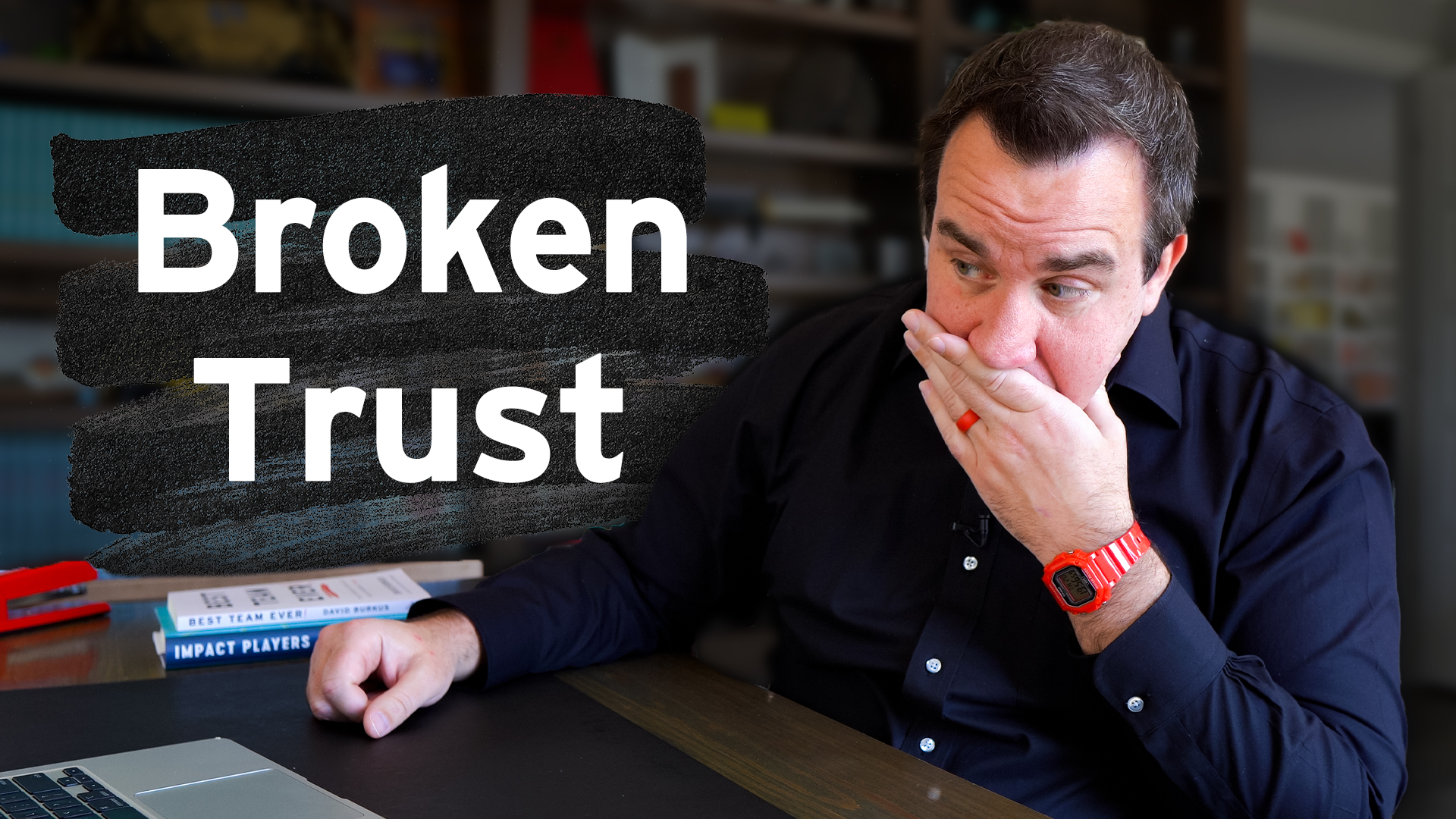
Trust is the foundation of every high-performing team. It’s the invisible force that enables collaboration, fuels innovation, and keeps teams resilient in the face of setbacks. But when that trust is broken—leaders need to focus on how to rebuild trust carefully and deliberately. Rebuilding trust isn’t as simple as offering an apology and moving on. In fact, that’s where many leaders go wrong.
They believe a sincere “I’m sorry” is all it takes to make things right again.
But it’s not.
Rebuilding trust takes far more than words—it takes sustained action. And if you’re serious about leading a high-performing team, you need to understand the process of how to truly rebuild trust when it’s been damaged.
Most Leaders Get Rebuilding Trust Wrong
Let’s start with the apology. A real apology—the kind that has the potential to begin the healing process—sounds like this: “I did this. I now know it was wrong. I see the impact it had on you. And I’m going to make it right.” That’s not the same as saying “I didn’t mean it” or “I’m sorry if anyone was offended.” Those aren’t apologies; they’re excuses dressed up in regret.
Even when leaders get the words right, they often assume the work ends there. But rebuilding trust doesn’t happen with a single moment of contrition. Trust isn’t built on words. It’s built on behavior.
What leaders fail to realize is that when they betray trust, they don’t just damage the relationship—they break an emotional loop. I call it the trust loop, and it exists in every relationship you have with your team, both collectively and individually. That loop is a cycle of expectation, action, and consistency. When everything is working well, the loop reinforces itself and trust grows. But when trust is violated, the loop shatters—and rebuilding it takes far more than a one-time gesture.
Why Words Aren’t Enough To Rebuild Trust
When you break trust and then try to move on too quickly, you’re sending an unspoken message to your team: “This wasn’t that big of a deal.” And that message undercuts any sincerity you intended with your apology.
Research backs this up. Paul Zak, a neuroscientist who studies trust in organizations, found that employees in high-trust workplaces report 74% less stress and 50% higher productivity. Trust isn’t just a feel-good concept—it’s measurable, and it affects everything from performance to retention. But that kind of trust can’t exist unless leaders take full accountability, even for their mistakes.
Taking accountability isn’t just about admitting the error—it’s about acknowledging the impact. And that’s where a lot of well-meaning leaders go off track. They say, “I made a mistake,” but they don’t take the time to understand or validate how that mistake affected others. The result? Their apology feels hollow. The team sees them as principled, maybe, but detached. Or worse—performative.
To truly rebuild trust, leaders need to demonstrate both responsibility and empathy. Because your team needs to know not just that you’re sorry, but that you get it. That you see the ripple effect your actions had, and that you care enough to do better.
What Rebuilding Trust Actually Takes
So how do you rebuild trust?
It starts with a strong apology, yes. But it doesn’t end there. Here are four steps to guide the process—and none of them can be skipped.
1. Own the Mistake—and Its Impact
Rebuilding trust begins with full accountability. You must take ownership of what happened and openly acknowledge the harm it caused. That might mean calling out specific behaviors, admitting lapses in judgment, or addressing how your decision made the team feel undervalued or vulnerable.
This isn’t a time to minimize, justify, or deflect. And it’s not just about your intention—it’s about the impact. The more specifically you can articulate what went wrong and why it mattered, the more credible your apology becomes.
2. Invite The Team Into The Solution
After accountability comes action. But not behind closed doors.
Telling your team, “I’ll do better,” isn’t enough. They need to see you doing better. Better yet, they need to be part of the process.
Invite them into the solution. Talk through what happened. Share the thinking behind your original decision—not to excuse it, but to help the team understand where things went wrong. Then ask for input. What would they have done differently? What safeguards could be put in place to avoid a repeat? The more you co-create the fix, the more your team sees that you’re serious about change.
Transparency builds credibility. And when your team sees you working on yourself, they’re more likely to work with you to rebuild what was broken.
3. Show Them You’re Changing
The most powerful way to rebuild trust is to demonstrate new behavior in old situations.
If you made a decision that sidelined the team last time, then the next time a similar decision comes up, you need to do the opposite. Bring the team in early. Ask for feedback. Show them that the lesson was learned—and internalized.
They don’t need to see everything you’re doing differently. But they do need to see you behaving differently in the kinds of situations that broke trust in the first place. That’s how predictability is restored. And predictability is a cornerstone of trust.
4. Be Consistent—Every Day
This is where most leaders lose momentum. They start strong. They apologize, they make a few changes, they check in. But over time, old habits creep back in and the consistency fades. And when that happens, the message to the team is clear: “That apology wasn’t real.”
Rebuilding trust isn’t about grand gestures. It’s about small, daily actions. It’s about showing up consistently. Following through consistently. Making decisions with integrity—consistently.
The longer you sustain those behaviors, the more the trust loop starts to turn again. Slowly, day by day, your team regains their confidence—not just in your words, but in your ability to lead with integrity.
Always Be Rebuilding Trust
You don’t rebuild trust with a single apology. You rebuild trust by showing that your apology meant something. That you’ve changed. That the behavior that broke trust won’t be repeated.
And while that takes time, it’s worth it. Because trust is what makes teams resilient. Trust is what drives performance. And trust—when rebuilt the right way—can actually come back stronger than before.
So, if you’ve broken trust with your team, don’t aim for forgiveness. Aim for consistency. Start by owning your mistake. Involve your team in the fix. Show them the change. And then keep showing up—day after day.
That’s how you rebuild trust. And that’s how you restart the trust loop.

About the author
David Burkus is an organizational psychologist, keynote speaker, and bestselling author of five books on leadership and teamwork.